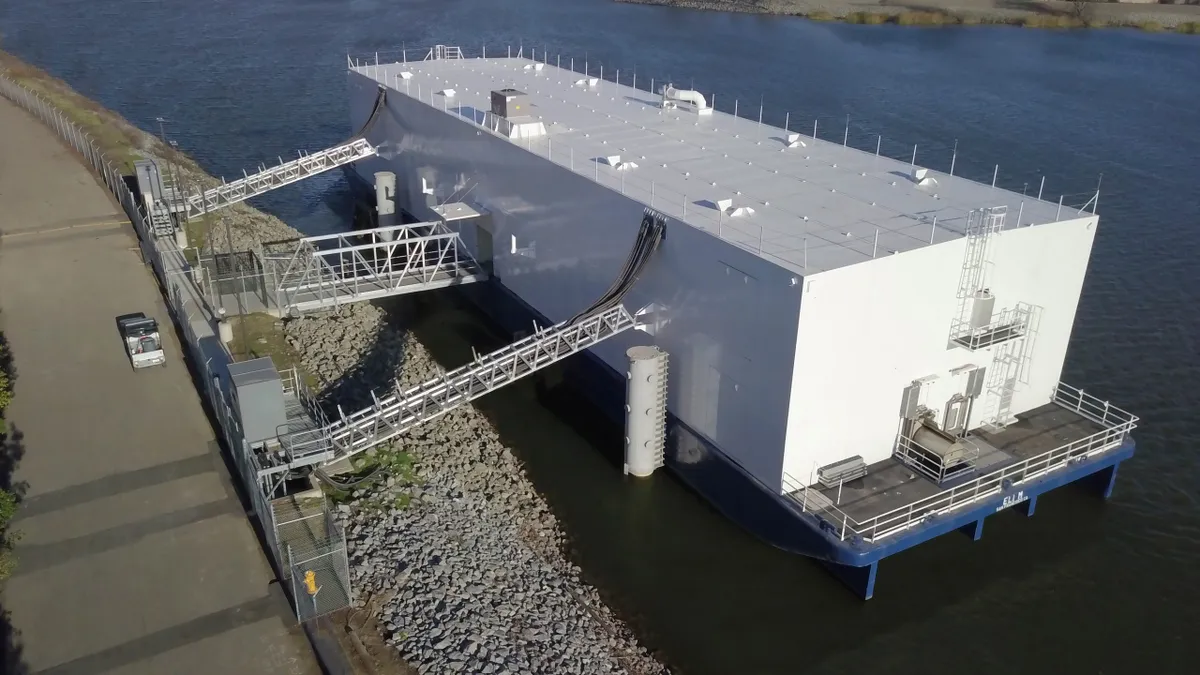The following is a contributed article by Tipton Loo, vice president of digital edge at PK.
Before Portland General Electric (PGE) began introducing smart meters years ago, it made a critical decision: to test the meters in select neighborhoods and prove the meters' efficacy for lowered operational costs, better customer service and reduced customer rates. When it was time for a broader rollout, the utility took a phased approach, installing 850,000 meters over the course of 18 months.
Today, PGE's phased approach to adopting the industrial internet of things (IIoT) has proven successful.
By starting small and creating a repeatable, scalable process, it was able to roll out an initiative that now saves $18.2 million annually, eliminates 1.2 million miles of driving and saves 80,000 gallons of gasoline every year from meter-reading vehicles. The meters also help its repair crews respond to power outages quickly, enabling the company to rapidly turn the lights back on in its customers' homes.
IIoT: Big potential and challenges
As PGE found, the IIoT has massive potential to accelerate outcomes for utilities by enabling the connected grid and smart metering, eliminating time-consuming equipment troubleshooting and asset maintenance, connecting data from numerous sites, and identifying which equipment parts to stock.
According to Gartner, by the end of 2020, utilities around the world will have implemented more than 1.37 billion internet of things endpoints. That's a 17% increase over 2019.
Many utility leaders see the IIoT as a panacea for inefficiencies that plague their companies today. But not every company has been as successful as PGE: nearly three-fourths of IoT projects are failing, a survey released in May 2017 by Cisco found.
Although utilities are ready to jump on the Industry 4.0 bandwagon, they are struggling with projects that grow expensive and unwieldly, with many failing to make it past the proof of concept stage.
Often, companies scale too quickly before figuring out needs, technical and non-technical impacts, and understanding how to change and operate the business based on the new IIoT program. Unless your company can weather disruptions to the business and bottom line, it's not recommended to reinvent a large part or all of the business overnight.
Those that are successful, however, are taking an approach similar to PGE — they're starting small with a proof of concept, testing at a larger scale with a pilot, and then taking it beyond initial deployment to optimize the performance of their entire system. Doing so can reduce the impact to operations and help utilities swiftly achieve the desired results effectively.
Leaders who want to take this approach should break out their IoT adoption into three key phases.
Proof of concept: Start with a single asset and maximize its performance
Begin simply with a single endpoint. For example, a single smart grid connection or a single connected piece of equipment.
Depending on the complexity of the asset, you could consider a small group of similar endpoints. Starting with a small proof of concept allows utilities to quickly identify the standards and procedures necessary for success and quantifiable results.
Test every aspect of the asset and endpoint with an eye for its real-world use. Evaluate and iterate connectivity, telemetry ingestion, the data abstraction layer, data storage, analytics and reporting.
Once inefficiencies and issues are worked out, begin assessing the business rules associated with the implementation. What actions should be taken with the insights gathered? What guidelines need to be put into place for the new IoT system to achieve the greatest benefit to the organization?
With initial findings in hand, utilities leaders can initiate internal communications around the new IoT ecosystem and begin retraining or redeploying resources and employees to fit the new application.
The result will be the start of a recipe for long-term success — this stage is all about proving value, building your initial set of standards and practices, and unlocking repeatability and duplication on a larger scale. This phase would then be repeated on other assets.
Remember to build up the implementation recipe as it will be foundational to the next phases. Thorough documentation of the proof of concept and its specifications are critical to create replicable process, as is building standards for asset identification, metrics and how both will be used by the business.
Pilot: Scale up to an entire functional area and improve its performance
With your initial insights and proven approach from your proof of concept in hand, it's time to adapt and test it on an entire function in a pilot.
In the pilot stage, test your connected devices or equipment across a single neighborhood, plant or equipment fleet. Begin implementing end-to-end analytics and status monitoring to cull business insights on key performance metrics and make them easily accessible in reports or dashboards. At this stage, you should also stress test the system you've created to ensure that it functions as needed during critical events.
With the metrics collected from your proof of concept, start to harden your operational standards. This should include connectivity between the cloud/enterprise and IIoT devices at the edge.
By now you should be looking at connectivity standards and edge computing hardware, establishing communication standards, and building a unified information model to name and map your devices and device groupings. At the end of the pilot phase, your implementation costs and impacts should now be clear.
Take the time to enhance your IIoT implementation recipe, deploy it correctly, observe how it operates on a daily basis and under stress, and update it as needed. Adding more endpoints to the system increases complexity and may uncover new challenges to be solved.
Once it's confirmed that the recipe works on a larger scale, utilities can move forward with a widespread production rollout.
Production: Launch by business or geographical unit to optimize the entire network
Begin by developing a plan to implement the recipe across the entire business or geographical unit. Productionalize the pilot with a review-learn-improve process that accounts for the needs of that function.
Once again, you'll need to observe, analyze and update the recipe as new issues bubble to the surface. When the launch is complete, expand analytics and status monitoring from the pilot to provide enterprise visibility across all assets and business units.
In doing so, you'll reveal new insights and opportunities, including:
- Cross-asset KPIs that allow utility leaders to compare the performance of a single asset against others in the network,
- Cross functional areas performance comparisons,
- More detailed and precise measurement of the business operations,
- The ability to marry data from the edge with enterprise systems such as ERP, CRM and HR to provide 360 degree visibility and define new business practices.
With the IIoT initiative now online across the organization, continue to evaluate the ROI of the program. With full connectivity from the edge to the enterprise, you can start to uncover inefficiencies and new areas of opportunity.
Finally, adapt operational maintenance plans to account for the needs of IIoT systems at the enterprise level.
The traditional Industrial Control Systems used by utilities are typically closed environments, but exposing these systems to the internet opens the door to new challenges. So while security, analytics and continuous integration may have been a lower or non-existent priority in the past, their importance must now be elevated. Utilities must draw on IT practices, such as regular firmware updates and information security practices, to ensure that operations continue as intended.
As PGE did, utilities can tap into the efficiencies, insights and ROI promised by the IoT. Phased implementation turns a complex process on its head by breaking it into steps designed to uncover and adapt to the unique operating factors and risks in your environment.
A phased strategy will pave the path forward to more effective operations, improved customer service and happier customers and workforce.
















